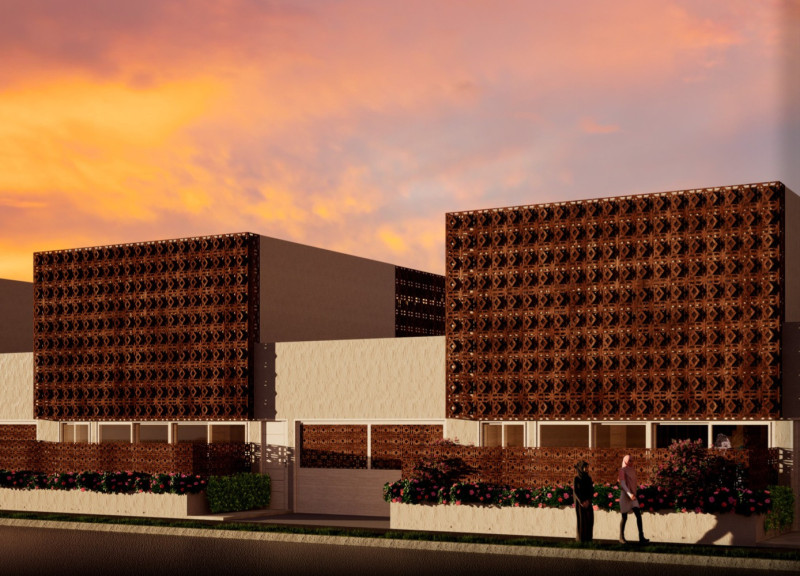5 key facts about this project
This project embodies a commitment to creating a functional environment, where the primary use of the building is defined by its ability to adapt to various activities and events. The design supports both individual and communal uses, encouraging interactions among users while also providing spaces for retreat and contemplation. This duality of function reflects a deeper understanding of modern living, where the lines between work, leisure, and social engagement are increasingly blurred.
Significant details manifest throughout the project, beginning with its unique exterior form, which skillfully combines various geometries to reflect the local landscapes. The façade is characterized by a modular arrangement of materials that together create an inviting yet robust appearance. The selection of materials—reinforced concrete, glass, steel, and timber—was made with careful consideration for both performance and aesthetics. The concrete structure forms the backbone of the design, ensuring durability and longevity, while expansive glass panels allow for natural light to permeate the interiors, fostering a sense of openness and connection to the outdoors.
The timber accents introduce warmth and tactile qualities to the overall composition, enhancing the visual palette while supporting sound absorption within the shared spaces. Steel is employed in the framework and supporting elements, exhibiting strength while contributing to a sleek profile that distinguishes the building from its surroundings. Moreover, landscaping features around the site incorporate native plants, creating green areas that enhance ecological balance and encourage biodiversity.
A distinctive aspect of this architectural design is its commitment to sustainability. The building integrates energy-efficient technologies, including solar panels and rainwater harvesting systems, that not only reduce the ecological footprint but also educate users on environmental responsibilities. Attention to passive design strategies ensures that the space remains comfortable and functional throughout various seasons, promoting energy conservation through natural means.
Another noteworthy element is the interior layout, which is designed to promote flexibility and adaptability. Spaces are arranged to allow for easy modifications, accommodating different group sizes and functions without compromising the overall flow. Open floor plans are paired with strategically placed breakout rooms that provide a balance of communal areas and private settings, emphasizing user comfort and productivity. This focus on space usability reflects a modern understanding of how design can influence human behavior and interaction.
The architectural project also showcases a sensitivity to its cultural context. By incorporating local materials and motifs into the design, the building not only honors the traditions of the area but also establishes a sense of belonging for its users. This respect for local identity is apparent in the ornamentation, layout, and even in the chosen colors, which draw inspiration from the surrounding landscape and architecture.
In conclusion, this architectural project represents a sophisticated blend of contemporary design, sustainability, and community-focused thinking. It serves as a model for future developments, illustrating how thoughtful architecture can positively influence everyday life. Readers are encouraged to delve deeper into the project presentation to explore the intricacies of architectural plans, sections, designs, and ideas that bring this concept to life. For a comprehensive understanding of its architectural innovations, engage with the visual and textual elements that detail the project’s distinctive features and design ethos.


























